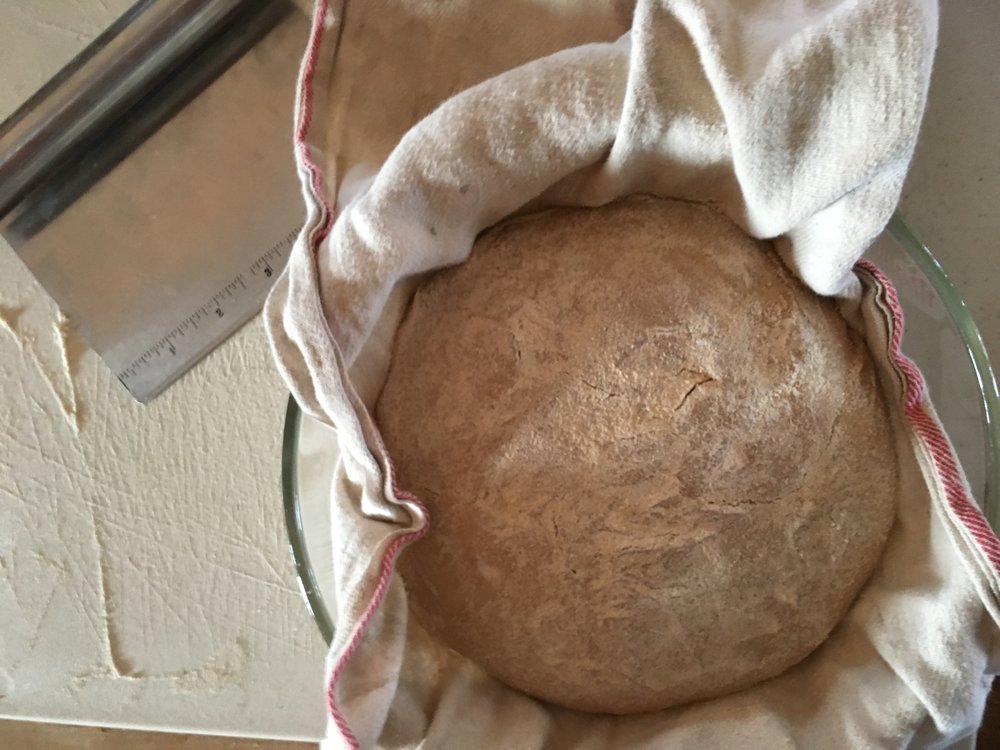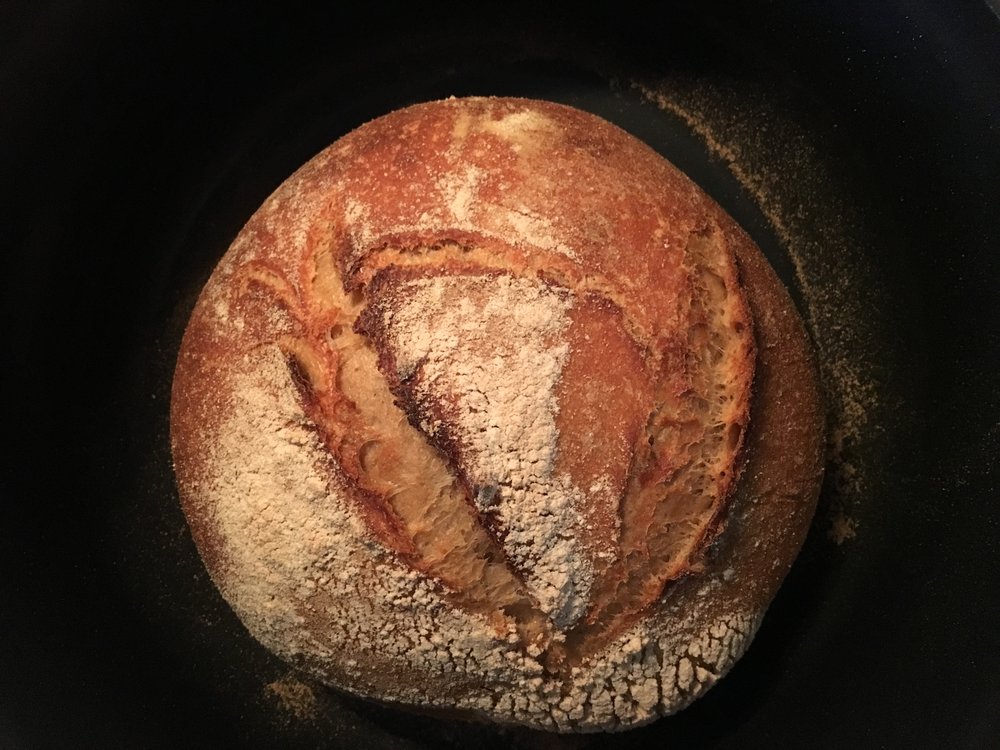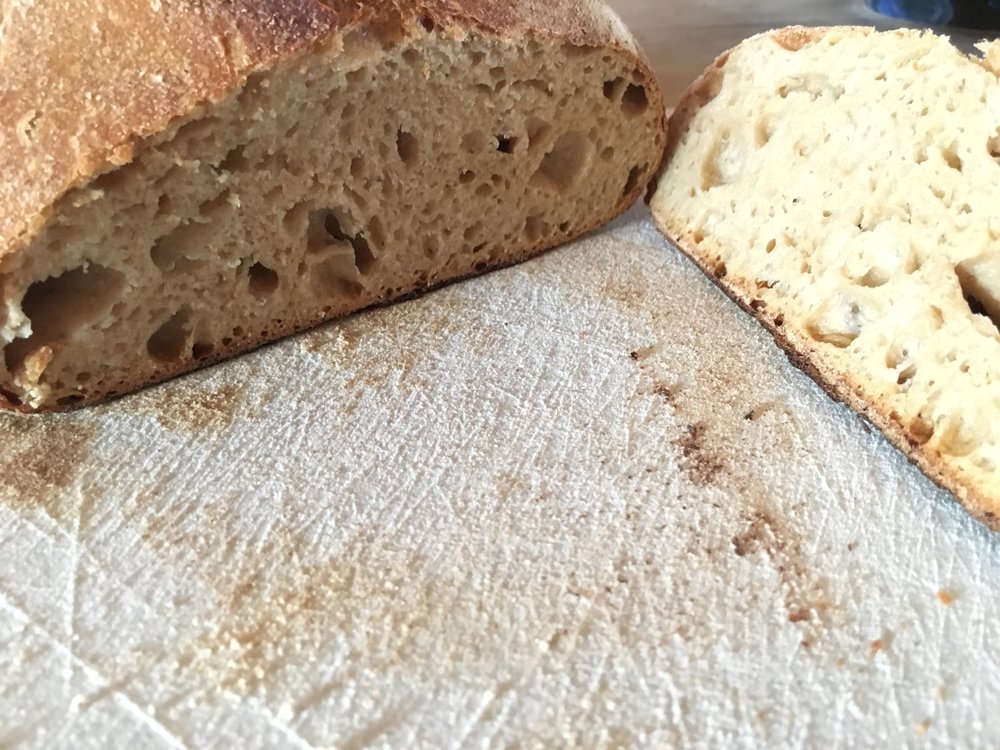Making Bread: DIY Sourdough
"The smell of good bread baking, like the sound of lightly flowing water, is indescribable in its evocation of innocence and delight." --M.F.K. Fisher
Have you been pining after making your own bread, your own naturally fermented sourdough? Well, I'm here to tell you that it isn't as hard as you might think!
Finally. I’ve been talking about my desire and need to make my own sourdough for years now! This weekend a sourdough start was given to me by a new friend and I achieved a life goal. Finally!

The starter.
Making things yourself is a way of life for those of us who choose it in this country, but is the fact of life for people living in other places around the world today and for humans of the past. I for one love making things myself. It gives me more of a connection to the thing and an appreciation for the process. I feel more nourished by foods I make at home versus buy out of convenience.
I've fermented many things over the years, but hadn't made sourdough before. I was always daunted by the process of making a starter.
Fermenting grains makes them easier to digest and vitamins and minerals more bio-available. This is because the sugars (ie. gluten) get eaten up by the bacteria and the acidic environment the bacteria create release nutrients. Naturally fermented breads also keeps longer than conventional bread. You can't get that with a fast acting yeast.

The fermented sour dough, before it goes into the oven.
If you want to learn more about this and watch the process, I recommend you watch Michael Pollan’s Cooked: Air documentary.
I used Tartine’s recipe from the NY Times. I did feel like the recipe was a bit involved, but in hindsight it wasn’t. It was just new to me. So be easy on yourself if this is your first time. I recommend planning one half day when you’ll be around the house to get this done. I had to let the leaven stand a good 8 hours longer than recommended in the recipe. If your spoon test isn't producing floating dough, just let it stand longer and be patient, it will happen! Also, for ease and a longer ferment, I highly recommend doing the overnight ferment in the fridge, and don’t bother waiting for the loaves to come up to room temp, which will take hours. I waited several hours in the morning before baking, after the overnight ferment of the loaves in the fridge, only later to get the advice from a baker of not needing to wait.

The finished loaf.

The crumb.
Yes, this bread tasted just as good as it looks. It was slightly sour with just the right balance of a crips crust, and soft and chewy inside.

Sourdough with butter, the first bite.
I hope this inspires you to make your own bread, and try other ferments if you haven't!
Recommended readings:
Fallon, S., Enig, M. G., Murray, K., & Dearth, M. (2005). Nourishing traditions: The cookbook that challenges politically correct nutrition and the diet dictocrats.
Katz, S. E. (2017). Wild fermentation: A do-it-yourself guide to cultural manipulation.
Robertson, C., & 3M Company. (2013). Tartine Bread. Place of publication not identified: Chronicle Books LLC.
